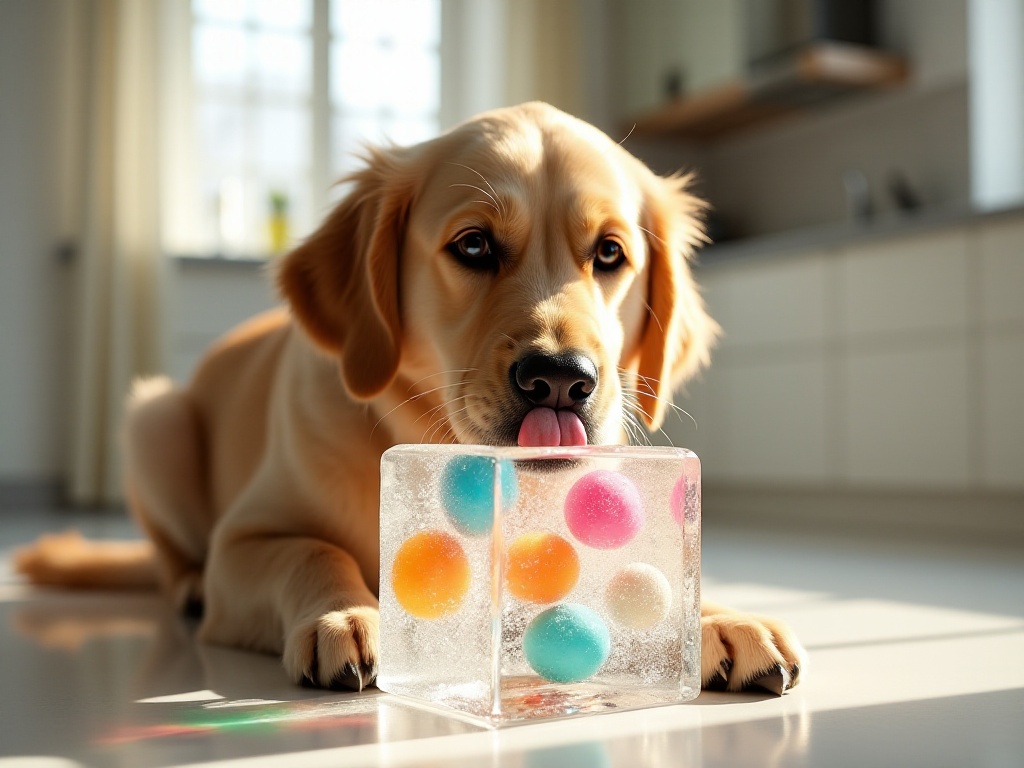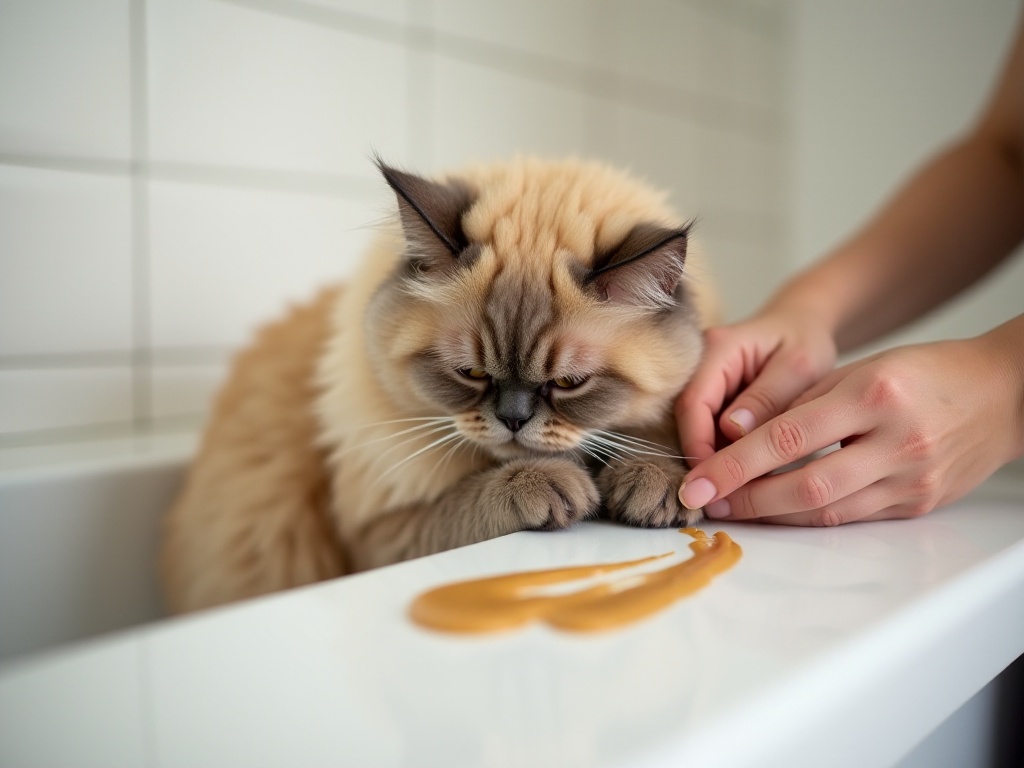Introduction
Hello everyone! As a seasoned pet parent who started keeping pets in college and has continued for several years into my professional life, I've experienced so much. I still remember how flustered I was when I first got a pet - I can hardly bear to think about it! But after years of hands-on experience, I've finally accumulated quite a bit of practical knowledge. Today I want to share various household tips I've gathered over the years - these are methods I've personally tested, and most importantly, they're very practical and won't cost much.
Cleaning Tips
To be honest, I think cleaning is the biggest headache for every pet parent. I remember when I first got a cat, I was nearly driven crazy by various "accidents." There were always stains on the carpet, fur all over the sofa, and I'd be exhausted just from cleaning every day. But after years of exploration and trial, I've now mastered a set of cleaning techniques.
Dealing with urine stains is definitely one of the most challenging problems. At first, I tried various cleaning products on the market, but the results weren't particularly satisfactory - either they didn't eliminate odors well or they were too expensive. Later, I discovered that common household baking soda and white vinegar are actually the true cleaning champions.
Here's the specific treatment method: First, when you find fresh urine stains, immediately use thick paper towels to absorb the surface liquid. This step is particularly important - if not handled promptly, the urine will seep deeper and become more difficult to clean. After absorption, mix white vinegar and water in a 1:1 ratio, put it in a spray bottle, and spray evenly on the urine stain. The acidity of white vinegar effectively neutralizes the alkaline substances in urine and removes odors. After spraying, sprinkle a layer of baking soda. Baking soda not only further absorbs remaining moisture but also reacts with the vinegar, creating bubbles that carry away deep stains. Once completely dry, just vacuum up the surface baking soda.
My beige carpet has been maintained this way for several years and still shows no signs of use. Best of all, this method is really inexpensive - just keep these two items regularly stocked at home. Of course, for particularly delicate carpets or fabrics, it's advisable to test first in an inconspicuous area.
Dealing with pet fur is truly a love-hate relationship. My Ragdoll cat has particularly long fur, and during shedding season it's like it's snowing. At first, I had to change clothes several times a day because my clothes would be covered in cat fur just from sitting on the sofa or holding the cat. Later I discovered that rather than changing clothes constantly, it's better to have adequate cleaning tools ready at home.
I now keep lint rollers in various corners of my home - they're essential in the living room, bedroom, and entryway, and I even keep one next to my desk. This way, whenever I notice fur on clothes or furniture, I can deal with it immediately. When choosing lint rollers, I recommend buying reusable ones - though they might cost more initially, they're more economical in the long run.
In addition to regular use of lint rollers, I also periodically use rubber gloves to clean the sofa and carpet. Just put on rubber gloves and gently rub the surface, and the fur will easily gather together. This method is particularly suitable for cleaning corners that lint rollers can't easily reach.
Another particularly useful tip is to spray a little water on the carpet or sofa before vacuuming. Not too much, just slightly dampen it. This prevents fur from flying everywhere while vacuuming and makes cleaning more thorough.
Speaking of vacuum cleaners, I strongly recommend choosing one with special pet hair cleaning attachments. Though it might be more expensive than regular vacuum cleaners, the cleaning effect is so much better. Especially those attachments that can be directly attached to pets - they're absolute lifesavers during shedding season. My cat is now used to being vacuumed and will actively come over waiting to be cleaned when she sees me take out the vacuum cleaner.
Besides these routine cleaning tasks, I also do some deep cleaning periodically. For example, every month I wipe down the cat tree and cat bed with a mixture of clean water and white vinegar to remove deep-seated odors. If you have leather furniture, it's recommended to wipe it weekly with specialized leather cleaner to prevent damage from cat or dog scratches.

Dietary Wisdom
In all my years of pet keeping, my biggest realization is: good eating leads to good raising. Pet nutrition is truly a profound subject that requires constant exploration and adjustment. After years of experience, I've summarized some particularly practical dietary tips.
First, let me share my proudest invention - frozen treats. This idea actually came to me during a particularly hot summer day. That day, watching my dog panting from the heat, I wondered how to help it cool down. Suddenly it hit me - why not freeze its favorite treats?
Here's how I do it: First, prepare an extra-large ice cube tray and place some of the dog's toys or treats inside, such as peanut butter-filled toy bones or small pieces of dried chicken. Then pour in clean water and freeze. Once completely frozen, take it out for the dog to play with. It takes a long time to lick through to the treats inside, which not only helps cool them down but also keeps them focused and can entertain them for hours.
However, I should remind everyone that while frozen treats are good, moderation is important - don't let dogs eat too many frozen things at once as it can upset their stomach. Also, toys must be sturdy and chew-resistant to prevent dogs from breaking them and swallowing pieces.
Speaking of dietary care during illness, this is really crucial. Both my cat and dog have experienced digestive issues, and each time I've used a chicken and white rice plan for recovery. The specific method is: cook chicken breast, remove skin and bones, and cut into small pieces. Cook the white rice slightly softer than usual for easier digestion. Mix chicken and rice in a 7:3 ratio, without adding any seasonings.
This recipe works well because chicken is easy to digest and has moderate protein content, while white rice helps stabilize the digestive system. Usually, you can see noticeable improvement after just two or three days. However, if there's no improvement after three days, definitely seek veterinary care promptly.
For regular feeding, I now use a scheduled, portioned feeding plan. Main meals twice daily, morning and evening, with some treats allowed in between. This not only helps control pets' weight but also helps develop regular eating habits. My cats have now developed such good habits that they come to me for food at exactly the same times each day.
Regarding water consumption, I particularly recommend using a water fountain. Although the initial investment is relatively large, it's really worth it in the long run. Water fountains maintain water freshness, and flowing water attracts pets to drink more. I've noticed that after using a water fountain, my cats and dog clearly drink more water than before, which helps prevent urinary system diseases.
Another particularly important suggestion is to pay attention to food expiration dates. I now use a notebook to record when each bag of food is opened, which helps avoid feeding expired food. Also, opened food must be sealed and stored in a cool, dry place to maintain freshness.

Outdoor Activities
Walking dogs isn't just about taking a simple stroll. As a responsible owner, I believe each outing should provide dogs with adequate exercise and mental stimulation.
My favorite dog walking location is parks with slopes. Playing frisbee on slopes is really a great form of exercise. First, because of the height difference, dogs need to expend more energy to chase the frisbee, naturally increasing the amount of exercise. Second, the uphill and downhill variations help train dogs' balance and coordination. Moreover, running on slopes is more challenging for dogs, which helps maintain their interest.
However, it's important to note that when exercising on slopes for the first time, you should progress gradually and let dogs slowly adapt. This is especially important for older dogs - you need to pay more attention to exercise intensity. I usually observe my dog's condition, and when I see heavy panting or slower movements, I know it's time to rest.
In cold winters, outdoor activities require special attention to paw care. I've previously experienced situations where my dog's paws cracked from playing too long in the snow. Later, I learned to apply a layer of petroleum jelly to the dog's paws before going out, which forms a protective barrier against cold and dry air damage.
I've been using this method for several years now, and it works really well. However, I should remind everyone not to apply too much, to prevent dogs from slipping while walking. Also, remember to wash the paws with warm water after returning home to prevent the petroleum jelly from causing the paws to become less breathable.
Besides daily walks, I also regularly take my dog to participate in outdoor activities. For example, meeting up with other dog owners to play, or participating in pet events. This not only gives dogs opportunities to socialize but also helps them learn how to interact with other dogs. Moreover, through these activities, I've met many like-minded friends with whom I can exchange dog-raising experiences.

Emergency Handling
As an experienced pet owner, I deeply understand the importance of emergency handling. After all, accidents always come unexpectedly, and without adequate preparation, you might end up panicking.
First, I strongly recommend that every pet-owning household prepare a dedicated pet first aid kit. My first aid kit contains: antiseptic wipes, medical cotton swabs, elastic bandages, medical tape, tweezers, small scissors, saline solution, and iodine. These items may seem simple, but they really come in handy in critical moments.
For instance, once my dog accidentally cut its paw on broken glass while playing outside. Fortunately, I had my first aid kit with me and immediately cleaned the wound with saline solution, then disinfected it with iodine, and finally bandaged it. Although we still went to the vet afterward, the prompt emergency treatment prevented infection.
Speaking of emergency handling, I want to share a special trick for finding lost dogs. This method might sound unbelievable, but it really works. If your dog accidentally runs away, don't chase after it. Chasing will only make the dog run further away, and it might hide out of fear.
The correct approach is: while the dog can still see you, pretend to fall and act injured. At this point, the dog's innate protective instinct will make it worry about your safety, and it will naturally come back to check on you. I've successfully used this method to find lost dogs twice before, and it works every time.
However, note that this method only works when the dog can still see you. If the dog has run out of sight, you'll need to use other search methods, such as posting lost dog notices nearby or sharing information on social media.
Speaking of emergency handling, I think the most important thing is actually prevention. For example, regularly check if doors and windows are properly closed to prevent pets from accidentally running out. Keep electric wires properly stored to prevent pets from chewing them. Keep cleaning supplies and medications in places pets can't reach. These small details may seem simple, but when done properly, they can prevent many accidents.
Keeping pets is like this - it requires both care and thought. But once you master these techniques, you too can become a qualified pet parent. Actually, the most important things in keeping pets are patience and love. Through gradual exploration, you can always find the best way to get along with your pets.
Do you have any unique pet-raising experiences to share? Or any questions you'd like to discuss? Welcome to tell me in the comments section, let's exchange ideas and improve together!


